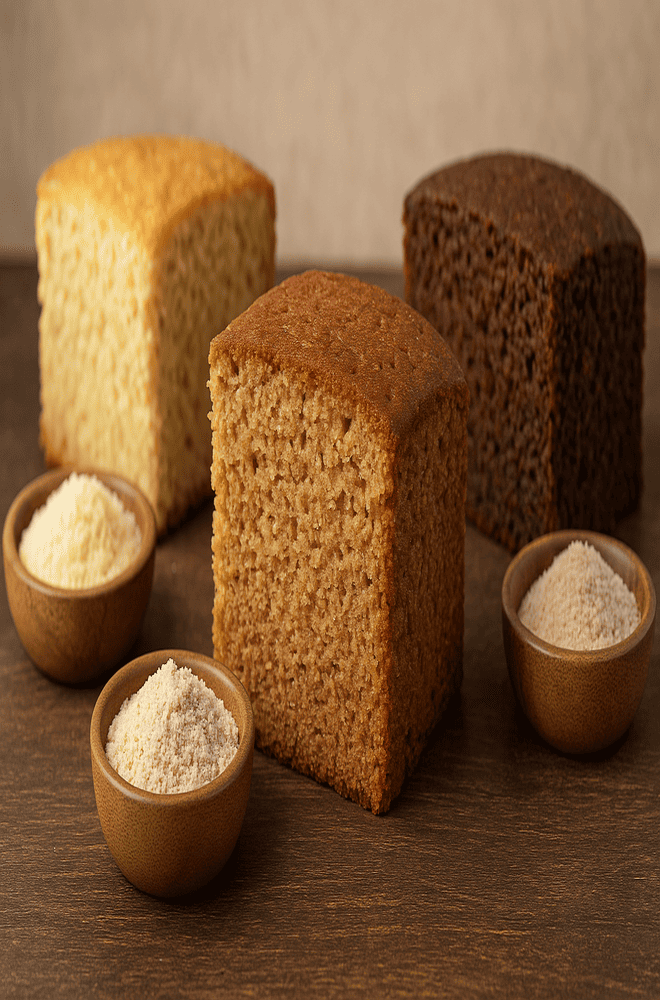Whole wheat flour and other alternative flours have gained popularity among home bakers and professionals alike. Whether you’re aiming for a healthier option, trying to bake for dietary restrictions, or simply curious to explore new flavors and textures, choosing the right flour can completely transform your cake. In this article, we’ll dive deep into how whole wheat and alternative flours behave in cake recipes, how they compare to all-purpose flour, and how to use them for delicious results.
Why Consider Whole Wheat or Alternative Flours?
Most traditional cake recipes call for all-purpose flour or cake flour because of their fine texture and low protein content, which results in a soft, tender crumb. But alternative flours—such as whole wheat, almond flour, oat flour, spelt, coconut flour, and even gluten-free blends—offer unique benefits:
- Nutritional value: Whole wheat and many alternative flours contain more fiber, protein, and essential nutrients.
- Flavor: They bring distinct flavors—nutty, earthy, sweet, or even slightly bitter—that can enhance certain types of cakes.
- Dietary needs: Some people need gluten-free options or prefer flours with a low glycemic index.
Before diving into substitutions, it’s crucial to understand the specific properties of each type.
Whole Wheat Flour: What You Need to Know
Whole wheat flour is made by grinding the entire wheat kernel, including the bran and germ. This gives it a higher nutritional profile, but also makes it denser and more absorbent than all-purpose flour. When used in cakes, whole wheat flour can:
- Create a heartier, denser texture
- Produce a darker crumb due to the bran
- Add a slightly nutty flavor
To avoid overly dense cakes, many bakers use a 50/50 blend of whole wheat and all-purpose flour. This balances nutrition with texture and lightness.
When to Use Whole Wheat Flour in Cakes
Whole wheat flour works especially well in:
- Spice cakes
- Banana or carrot cakes
- Applesauce cakes
- Chocolate cakes (where the stronger flavor is masked)
If you’re aiming for a super light vanilla sponge, whole wheat may not be the best choice. But for rustic or robust cakes, it can be a star.
Almond Flour: Moisture and Richness
Made from finely ground blanched almonds, almond flour is naturally gluten-free and high in fat. It adds moisture, richness, and a delicate crumb to cakes. However, since it contains no gluten, it needs structure from eggs or another binding ingredient.
Best used in:
- Pound cakes
- Torte-style cakes
- Flourless chocolate cakes
- Keto or low-carb recipes
Tip: You can’t replace wheat flour 1:1 with almond flour. Start with recipes specifically developed for it, or substitute up to 25–30% of the flour in a traditional cake recipe.
Oat Flour: Light but Delicate
Oat flour, made from finely ground oats, has a mild, slightly sweet flavor. It’s gluten-free (if made from certified oats) and light in texture. It gives cakes a soft crumb but can become gummy if not balanced with other flours.
Great for:
- Muffin-style cakes
- Vegan or gluten-free baking
- Lighter fruit cakes
Try mixing oat flour with almond flour or gluten-free blends to maintain structure and avoid sogginess.
Coconut Flour: Powerful but Tricky
Coconut flour is ultra-absorbent and requires more liquid than other flours. It adds a tropical flavor and is often used in grain-free or paleo baking.
Use it in:
- Coconut or citrus cakes
- Recipes designed for coconut flour (not recommended as a straight substitute)
Tip: For every cup of wheat flour replaced, you’ll need just 1/4 to 1/3 cup of coconut flour—plus more eggs and liquid.
Spelt Flour: Milder Than Wheat
Spelt is an ancient grain with a slightly sweet and nutty taste. It contains gluten but is easier to digest for many people. It behaves similarly to whole wheat flour but with a lighter texture.
Spelt works well in:
- Chocolate or honey cakes
- Coffee cakes
- Apple or cinnamon cakes
Substitute 1:1 with all-purpose flour, but be mindful of mixing gently, as spelt’s gluten is more delicate.
Gluten-Free Flour Blends: Convenience with Customization
Gluten-free blends are widely available and designed to mimic the structure of wheat flour. These often contain a mix of rice flour, potato starch, tapioca starch, xanthan gum, and more.
Use them when baking for:
- Celiac disease or gluten sensitivity
- Vegan + gluten-free needs (paired with the right binders)
Tip: Choose a high-quality blend specifically for baking cakes. Read labels and user reviews to see which ones yield the best texture.
How to Adapt Recipes for Alternative Flours
If you want to experiment, here are some tips:
- Start by replacing 25% of the flour with your alternative flour and see how it affects taste and texture.
- Increase liquid if using absorbent flours like coconut or whole wheat.
- Add an extra egg or flax egg for structure, especially with gluten-free or nut-based flours.
- Let the batter rest for 15–30 minutes before baking to help with hydration and structure formation.
For more foundational knowledge on flour types, revisit our article “Flour Power: Choosing the Right Flour for the Perfect Cake”. If you’re aiming for healthier options, see “How to Bake a Healthy Cake Without Losing Flavor”, and for plant-based bakers, don’t miss “How to Bake a Vegan Cake That’s Actually Delicious”.
Final Thoughts: Choose Your Flour with Purpose
Whole wheat and alternative flours open up a world of creative and health-conscious cake baking. Whether you’re crafting a rich almond chocolate torte or a wholesome carrot cake with whole wheat, understanding your flour is key to getting results that are both delicious and intentional.
Experiment gradually, take notes, and soon you’ll have a personal flour toolkit that works for your taste, texture, and dietary preferences.
